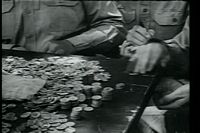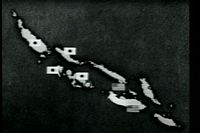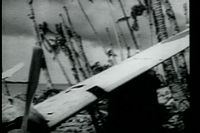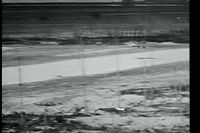
Guadalcanal: America's First Offensive
The video opens with more scenes of Japanese troops that I have not seen elsewhere.
 |
 |
Former ambassador to Japan, Joseph Grew, makes a speech about Japan's military machine. He refers to them as “barbarous hordes.” This is yet another example of how this series has speeches by various people that, again, I have not seen any other compilation have.
 |
 |
Late July, 1942, the 1st Marine Division goes to its embarkation point. The weather forecasters determine a cold front will pass by Guadalcanal, causing poor weather than can help screen the advance of the U.S. ships.
 |
The Marines head towards the beach in the first offensive U.S. operation in the Pacific theater. They land on Tulagi and Guadalcanal.
 |
August 8th, the Marine beachhead is less than a mile inland.
 |
The fighting conditions were very different from those in Europe, what with the heavy rains, the jungle, various critters, etc.
 |
Then it talks about the Battle of Savo Island, which was a victory for Japan.
 |
This shows Japanese bases in the Solomon Islands. This was a time when Japan still had air superiority.
 |
The main target of the Japanese bombers was Henderson Field.
 |
As the battle drags on for months, U.S. aerial forces begin taking the fight to the Japanese.
 |
The battle goes on into October, with the U.S. forces making progress against the Japanese.
 |
Late October, Japanese naval units on the move.
 |
October 26th, the Battle of Santa Cruz gets under way. The video says it was a tactical victory for the enemy.
 |
Henderson Field is made operational.
 |
There were sold Japanese taken prisoner, and some of them carried military documents and personal diaries.
 |
Lots of Japanese money was found.
 |
Feb. 9th, 1943, Guadalcanal is termed “officially secured.” More than 3,000 Americans died during the operation.
 |
Feb. 1943, American forces invade the Russells Islands without opposition.
 |
Late June, New Georgia is attacked.
 |
The remains of a Japanese plane on the airfield.
 |
U.S. forces fix up the airfield and begin using it for our own planes.
Another naval engagement. The U.S. forces got into the “Crossing the T” position. This allows maximum U.S. firepower to be directed on the Japanese ships, while the Japanese ships, since they are following one another, can't coordinate their firepower in the same way. A week later there was another naval battle in the area. The overall losses balanced out between the two countries, except for the Japanese loss of 6 subs to the U.S. not losing any. The problem for Japan, of course, is that they could not replace sunk ships as quickly as could the U.S.
New Zealand soldiers also took part in the fighting.
U.S. bombers could not hit any target in the area thanks to the U.S. taking over Japanese airfields.
1943 and attacks on Japanese-held Rabaul.
Suddenly, the video shifts focus. This part of the episode only lasts a minute or so, though.
Main Index
Japan main page
Japanese-American Internment Camps index page
Japan and World War II index page
|
|